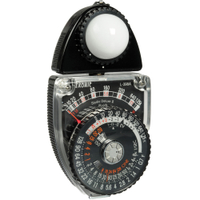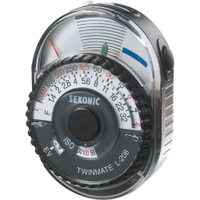Digital Camera World Verdict
The Sekonic Flashmate L-308X covers all my light metering needs, whether I’m using flash, constant or ambient lighting, and for shooting both stills and video. It packs a lot into a pocket-sized meter and delivers excellent accuracy. I’m sold on this Sekonic!
Pros
- +
Suitable for stills and video
- +
Versatile yet simple to use
- +
Compact and lightweight
- +
Reasonably priced
Cons
- -
Lacks an RF transmitter
- -
Lumidisc sold separately
- -
Relatively basic display
Why you can trust Digital Camera World
Let’s hit the rewind button for a moment. I bought the preceding Sekonic Flashmate L-308S some 20 years ago and have been using it ever since. I’ve always been impressed by its excellent accuracy and consistency, whether I’ve been using it outdoors under natural light, indoors under artificial lighting, and particularly for use with studio flash setups. The last of these scenarios is where the light meter really comes into its own.
For studio and location flash, I’ve entrusted many of my professional shoots to it entirely, and I’ve never been disappointed. The replacement L-308X (L-308X-U in the USA – same meter, different warranty) that I’m reviewing here looks and feels almost identical but combines the functions of the L-308S and the L-308DC videographer’s meter, delivering an all-in-one solution for hybrid shooters. And if you’re not familiar with the brand, let’s give that rewind button another poke.
Sekonic has been making some of the world’s best light meters since 1951, gaining such a good reputation that the company’s Digipro X-1 and L-518 meters crossed the final frontier on NASA’s Space Shuttle. Long story short, the L-308X aims to be a top light meter and a perfect add-on for the best photography lighting kits, whether you’re using a DSLR or one of the best mirrorless cameras.
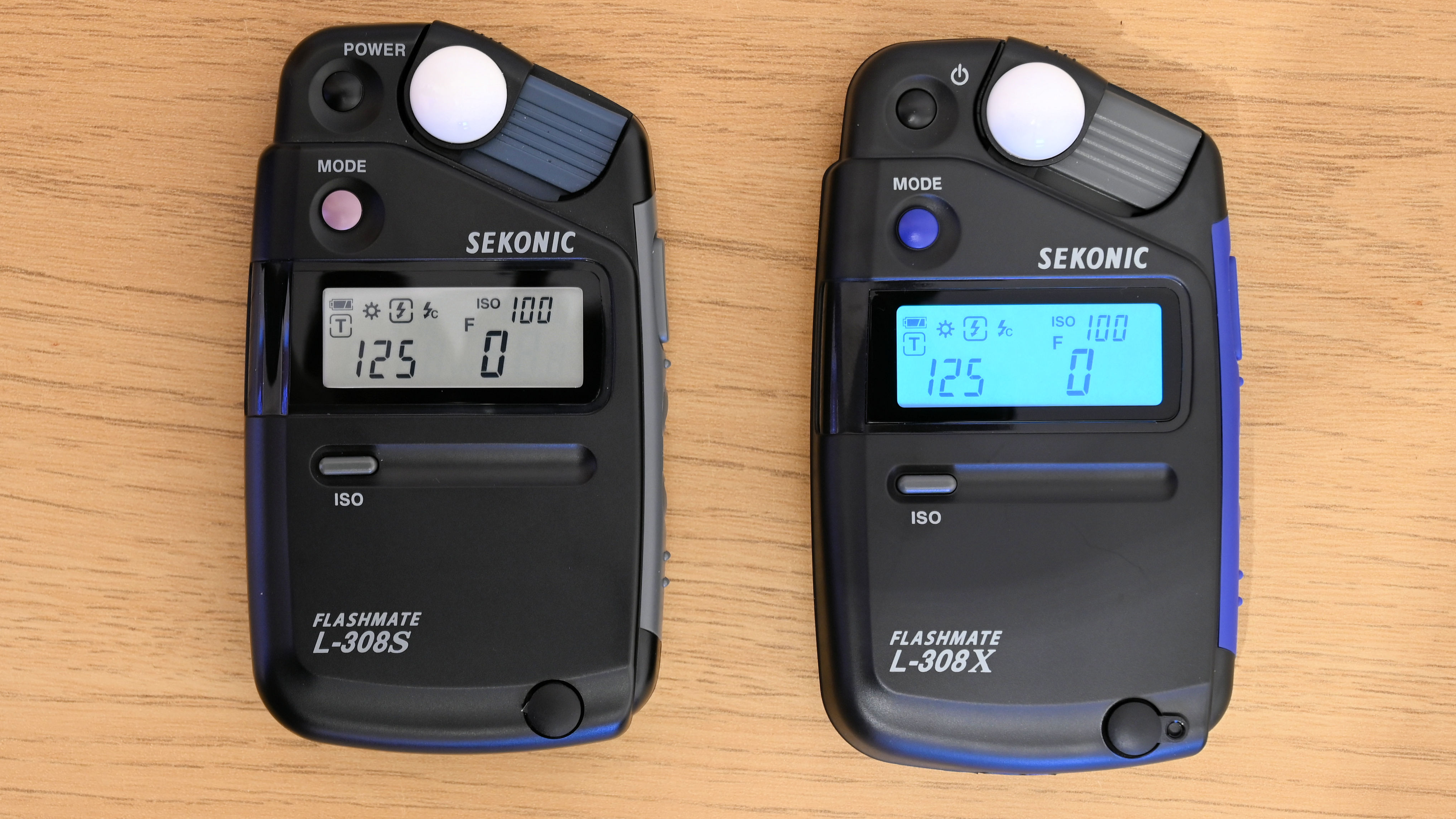
Sekonic Flashmate L-308X: Specifications
| Reflected metering | Yes |
| Incident metering | Yes |
| Flash metering | Yes |
| Angle of view | 40 degrees |
| EV range | EV 0-19.9 (0-90.9 flash) |
| Shutter speed range | 60-1/8000sec |
| Aperture range | f/0.5-90 |
| ISO range | ISO 3-8000 |
| LCD display | Yes, backlit |
| Battery | 1x AA |
| Dimensions (WHD) | 64 x 111 x 26mm |
| Weight | 80g (excluding battery) |
Sekonic Flashmate L-308X: Price
What price is the perfect exposure? Pretty much any recent camera can nail exposure settings in most shooting scenarios when using natural or artificial constant lighting. But the light meters in even the most sophisticated cameras can run into problems if you’re shooting challenging subject matter because they can only measure reflected light and some subjects are very much more reflective than others. And if you’re using a flash setup, especially with two or more flash heads, there’s no real substitute for a flash meter.
That’s where the Sekonic Flashmate L-308X wins out over the likes of the Sekonic Studio Deluxe III L-398A ($239/£235), the latter lacking flash metering. The L-308X is similarly priced at around $239/£244, although you’ll often find it discounted in the UK, costing about £189 if you shop around.
Even so, it’s still pricier than the Sekonic L-208 Twinmate ($139/£135), which has bags of retro charm but again lacks flash metering. Moving to the top end of the scale, the Sekonic LiteMaster L-478 ($379/£369) and Sekonic SpeedMaster L-858D ($629/£627) are fancier affairs, with the option of wireless RF triggers to suit a range of studio flash systems.
I personally don’t feel any need for anything more sophisticated than the L-308X and think it’s the best option for performance at an affordable price.
Sekonic Flashmate L-308X: Design & Handling
I really like the design and handling of the Sekonic Flashmate L-308X. It looks disarmingly simple but packs a wealth of features, shoehorned into a package that’s small enough to slip into a pocket. Some might say that you don’t really need a light meter in this day and age, but I’d disagree.
Even under natural or artificial constant lighting, a camera’s built-in light meter can give wildly inaccurate results when measuring the reflected light from subjects with particularly light or dark tones, with varying degrees of reflectivity.
With its lumisphere in place, the L-308X measures ‘incident light’, which equates to the brightness of the light source. Simply hold the meter where your subject is positioned and you’ll often get a much more accurate indication of how you should set your camera’s exposure. And if you do want to meter reflected light, you can simply slide the lumisphere to the side and measure reflected light through the underlying lens.
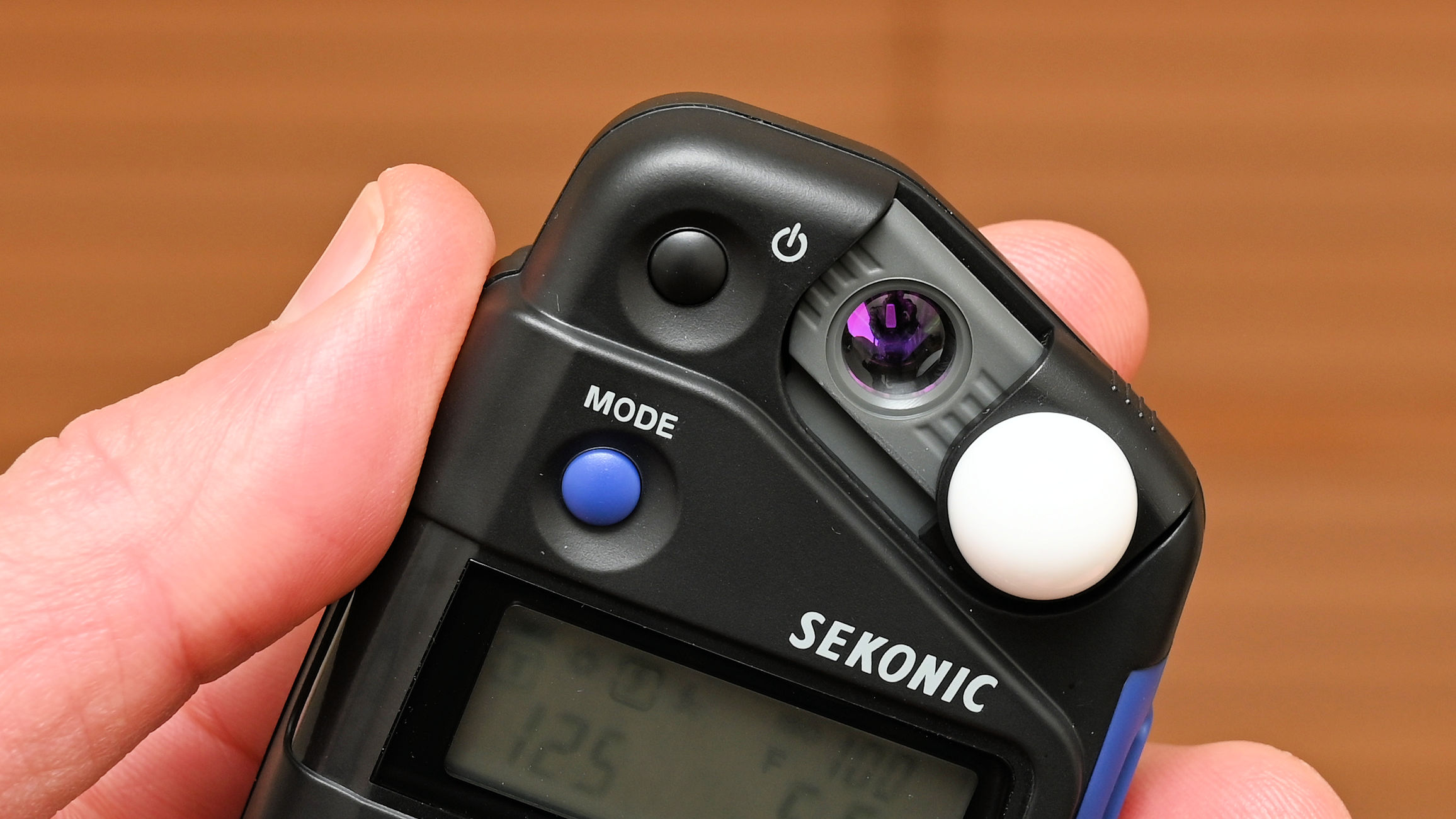
The L-308X runs on a single AA battery, which lasts for ages. The power on/off button is conveniently placed at the top left of the front panel. Moving down the front panel there’s a Mode button, then an LCD display screen. One improvement over the preceding L-308S is that the screen is backlit, being automatically illuminated when using the meter in darker conditions. Just below is a quick-access ISO button for matching the meter to your camera’s sensitivity setting, and a Synchro terminal at the bottom. I don’t tend to use the terminal, instead triggering flash heads from a wireless RF trigger. Even so, the wired option is there if you need it.
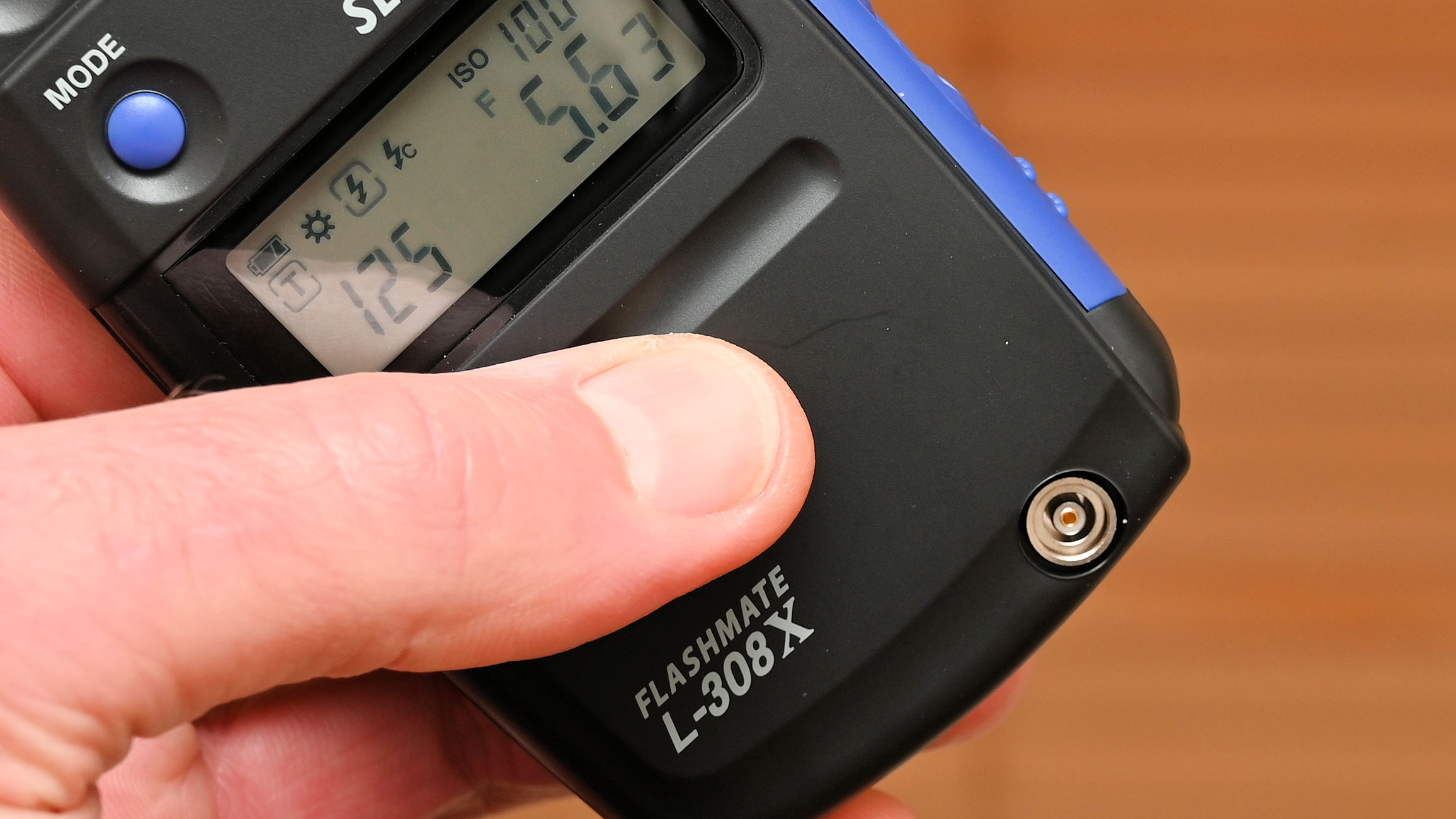
Moving to the right-hand side of the meter, there’s a Measuring button at the top, which falls conveniently under the thumb. Below this are up/down buttons for making adjustments to the likes of aperture, shutter speed, and ISO, depending on how you’re using the meter. Around the back at the bottom is a clip-off flap for replacing the battery and an eyelet for attaching the supplied strap. The meter also comes with a soft carrying case that has a belt loop on the back.
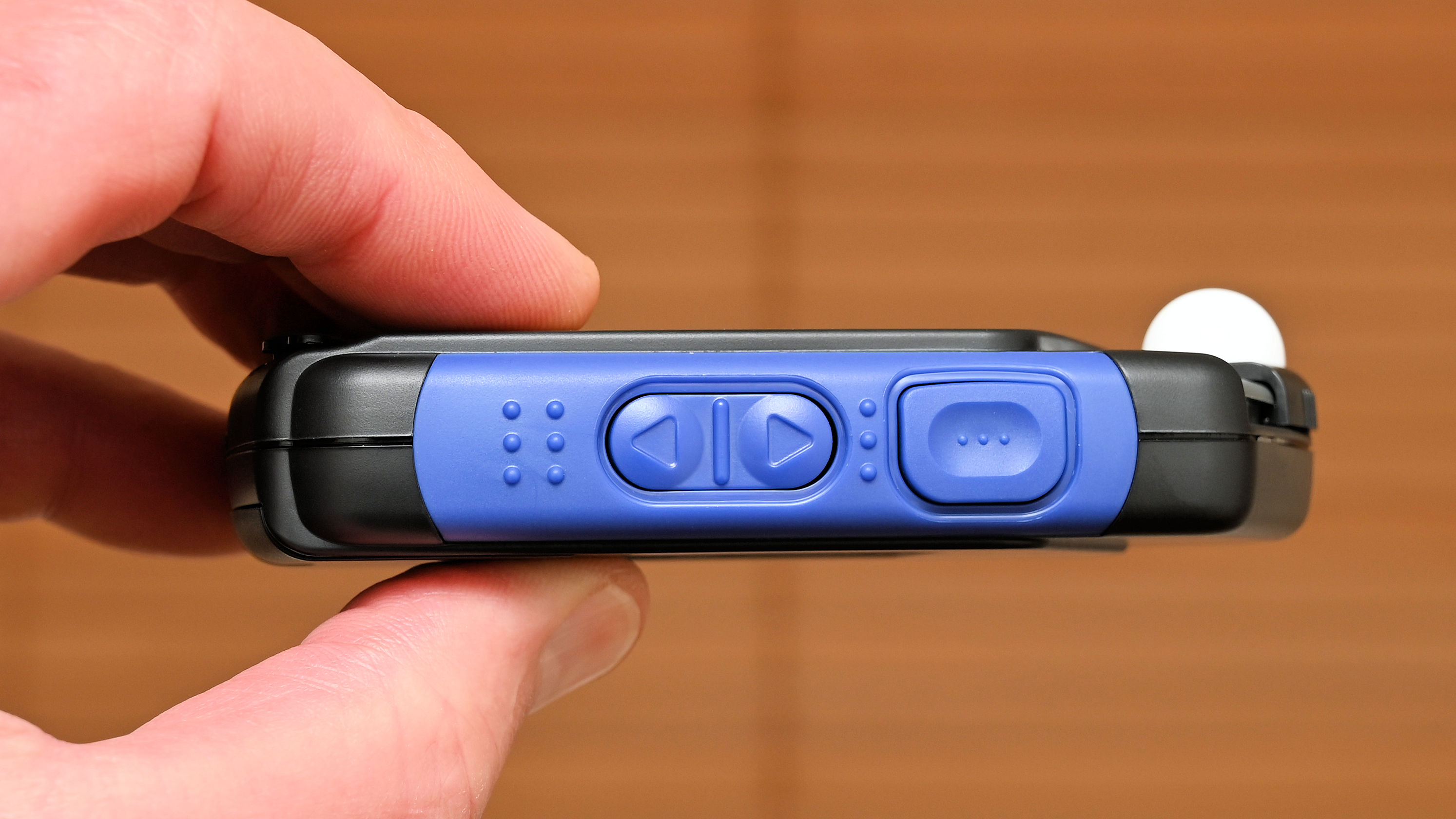
The Mode button enables you to quickly and easily cycle through the various measuring modes, including Ambient, Cordless Flash, and Cord Flash. For flash metering, I set the meter to Corless Flash, press the Measure button and the meter automatically takes a new reading every time I fire the flash from a remote trigger. Further metering options include aperture priority, shutter priority, and EV, the last of which gives a readout of ‘Exposure Value’ in 1/10th EV increments.
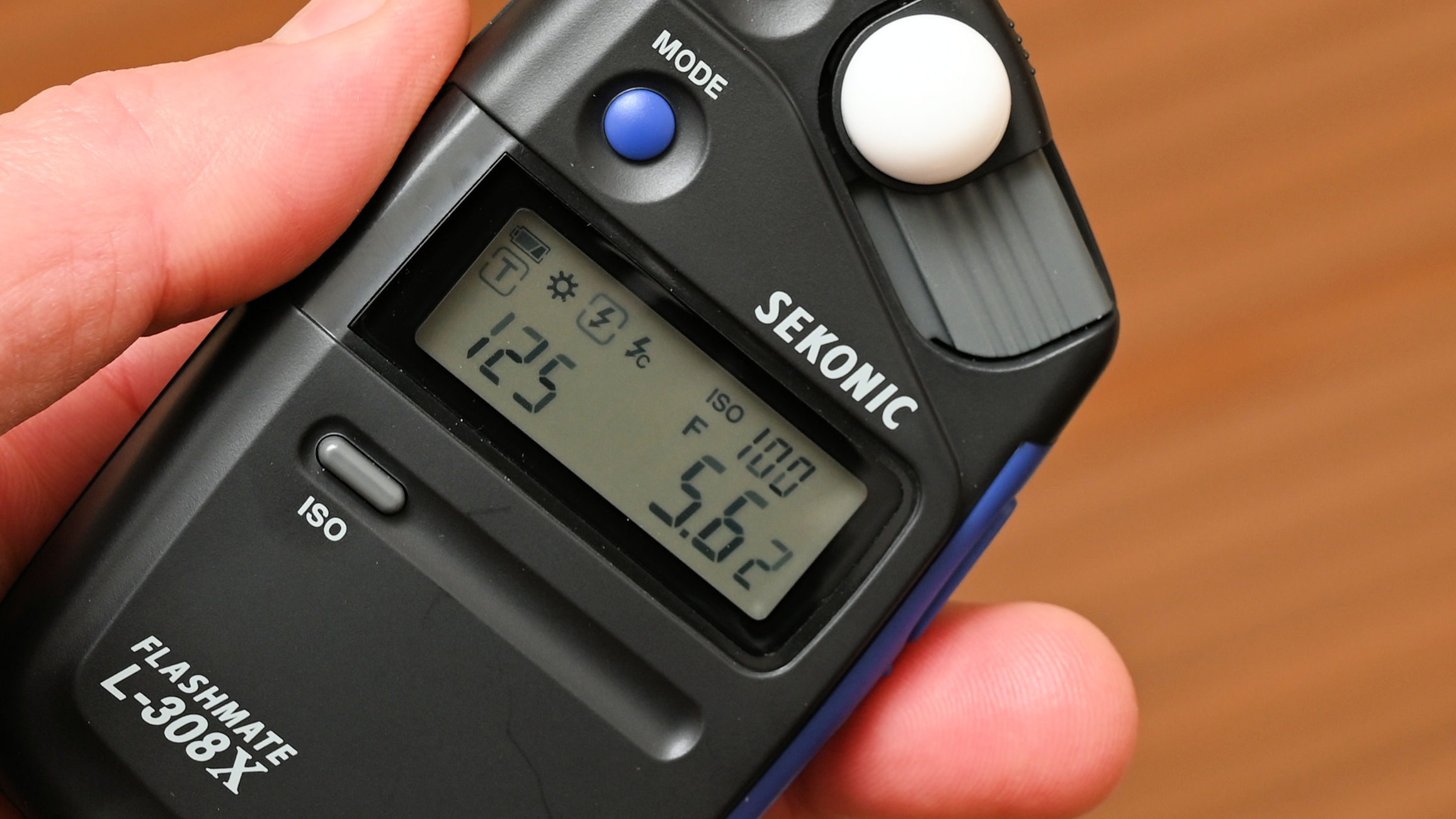
As I’ve mentioned, the main upgrade of the L-308X over the L-308S is that the new model works for videography as well as for just shooting stills. Selected as HD Cine instead of Photo mode in custom settings, this is ideal for regular cameras that work via frame rate and shutter speed settings. For both Photo and HD Cine modes, pressing the mode buttons to cycle through the options brings you to the ‘T’ shutter speed priority option for ambient lighting.
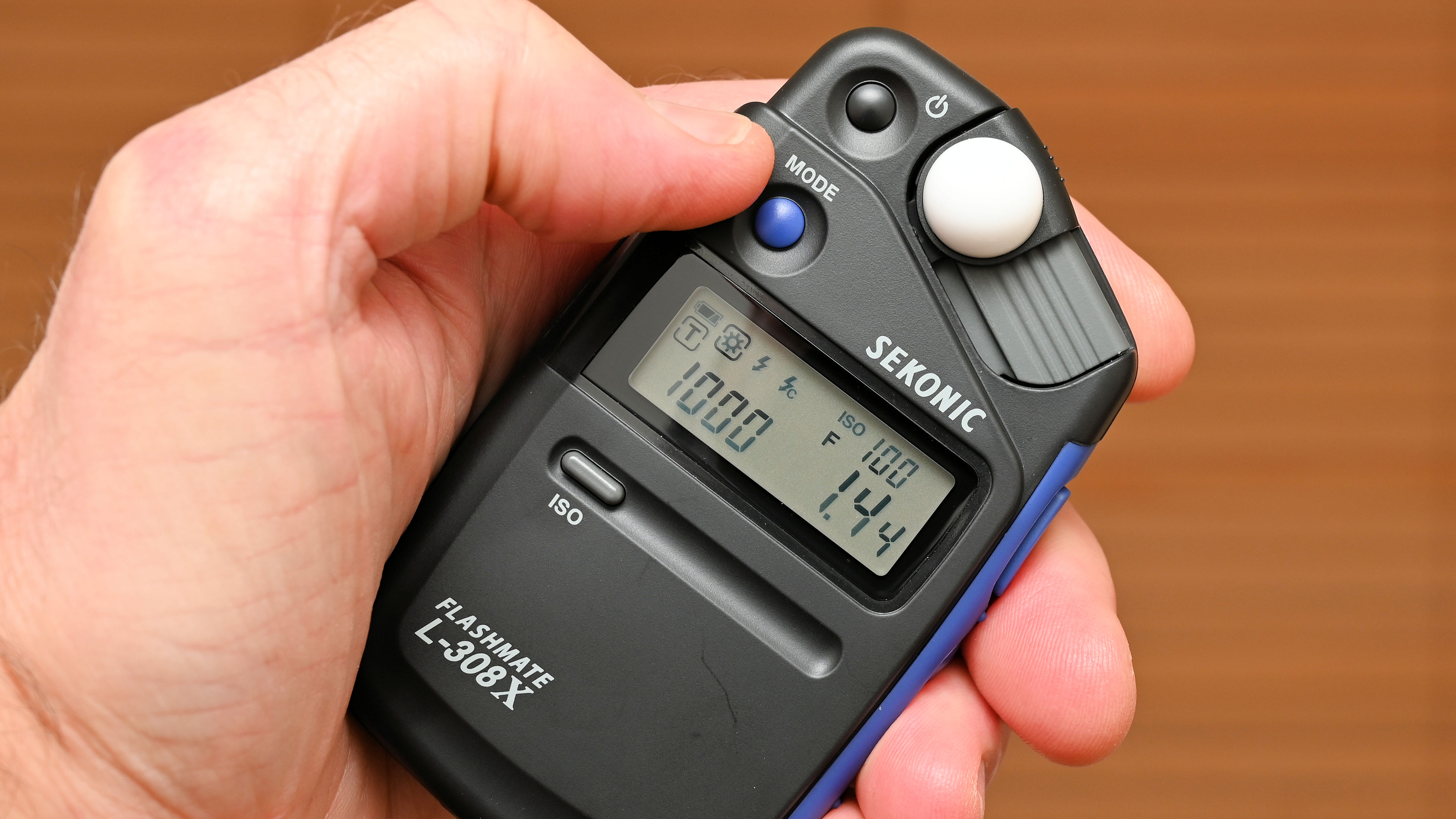
In HD Cine mode, you can set the frame rate and shutter speed, then make a measurement to find the appropriate aperture. An alternative Cine mode is available, again via custom settings, for use with film and digital cine cameras that combine frame rates with shutter angles. A further Simplified Illuminance mode is available for both HD Cine and Cine modes, again via custom settings, to display measurements in Lux or foot-candles. For this, you’ll need the optional lumidisc.
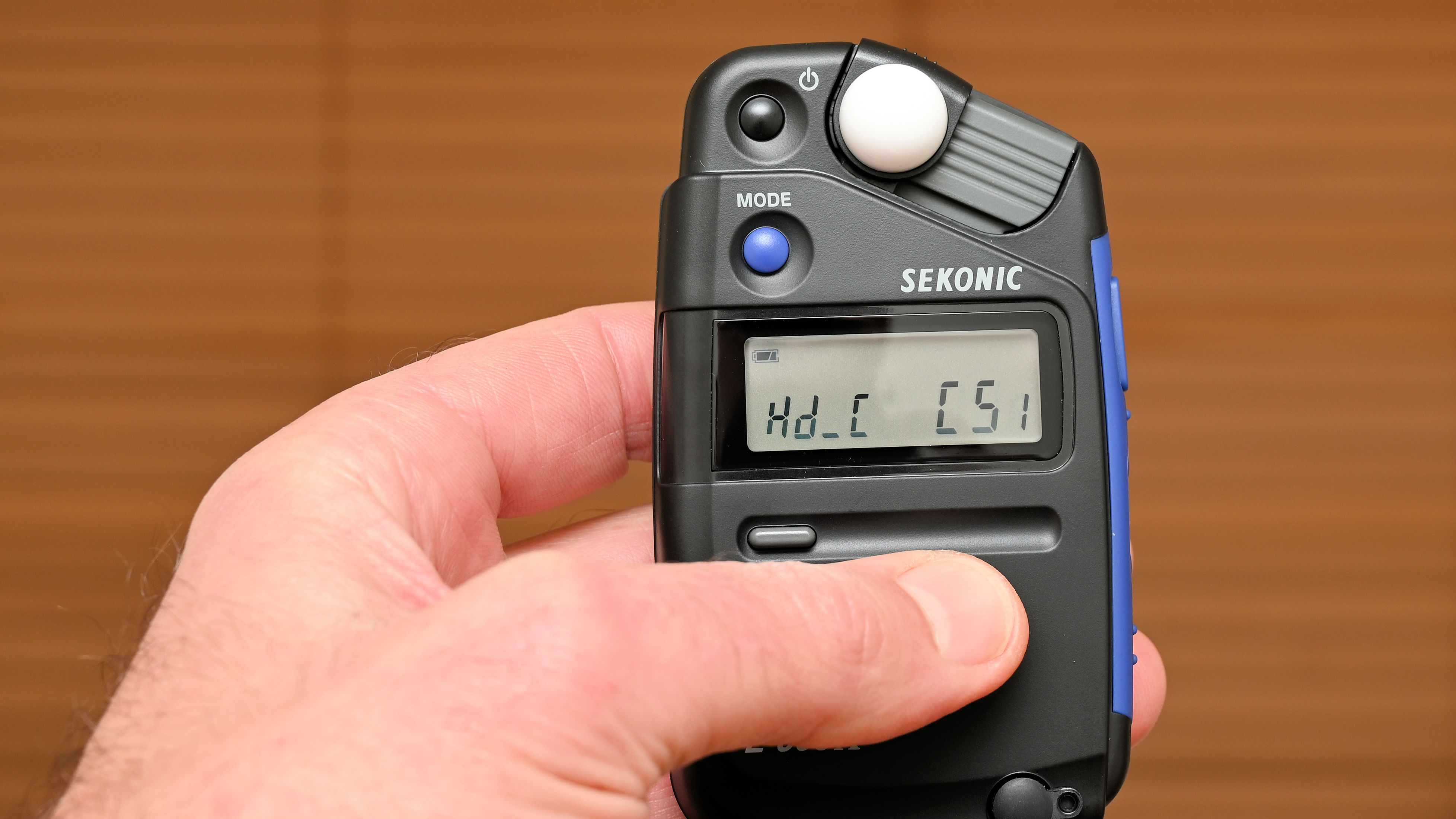
The lumidisc is available as an optional extra, but not supplied as standard issue with the kit. It slots over the measuring lens when the lumisphere is slid to the side. It’s useful for measuring lighting levels on green screens, paintings, and other flat artworks, and when taking Lux or footcandle measurements. The lumidisc also enables you to measure the ‘contrast’ of light, for example setting the ratios between key, hair and eye lights, or for ensuring even illumination across a background or green screen. If you feel the need, you can pick one up for around $35/£22.
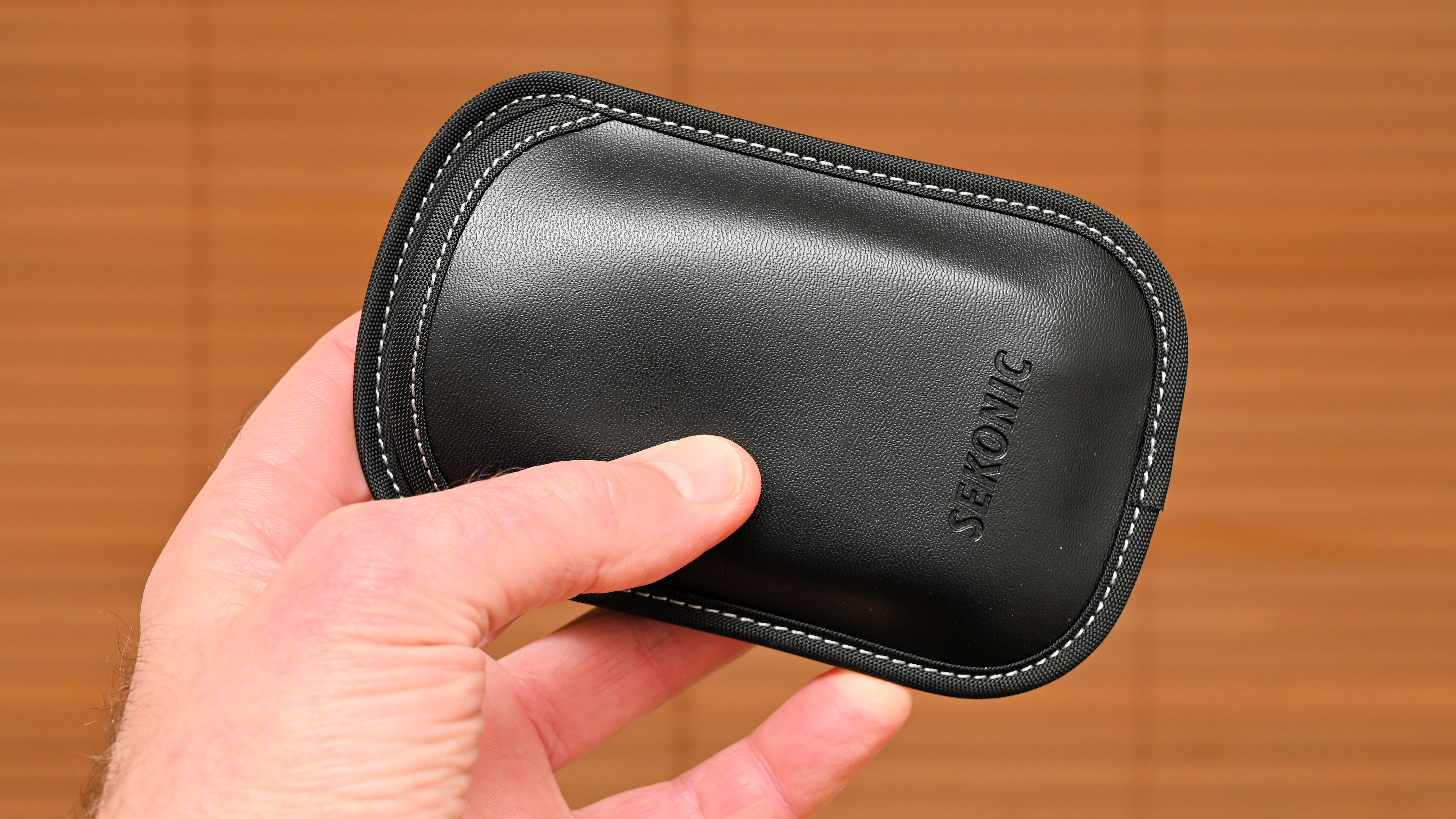
Sekonic Flashmate L-308X: Performance
Although it works really well as a regular light meter, the L-308X comes into its own when using flash setups, at least for stills photography. You could argue that with the luxury of instant playback in digital rather than film cameras, you can pick a ballpark for the intensity of your studio flash head, take a test shot, review the result, and adjust the exposure settings or flash intensity accordingly. But that can be a long-winded and time-consuming business.
Things get much more complicated if you’re using multiple flash heads, for example with a main light, hair light and a kicker to illuminate a white background. You might well have favored relative intensities for each light, so that the hair light is about a stop brighter than the key light, and a white background is about two stops brighter, so it looks white rather than light gray but isn’t so over-exposed that it washes out or causes other image quality problems. Using the L-308X to access all areas when taking measurements makes short work of simply getting your light right.

I found that, straight out of the box, the calibration of the L-308X was spot on. In regular use, shutter speed and aperture are shown in full f/stops with a 1/10th incremental supplement. You can swap to 1/3rd or ½-stop main step increments via custom settings, neatly covering off how you’ve got your camera’s exposure adjustment options set up. For cordless flash, I like that I can press the Measurement button and the reading will update automatically each time I fire a flash.

The range of the L-308X certainly covers everything I need. In Ambient Light mode at ISO 100, it can measure EV values of 0 to 19.9, in 1/10th EV increments, while shutter speeds run from 60s up to 1/8000s. Apertures go from f/0.5 to f/90.9 while, for flash, shutter speeds stretch from 1s to 1/500s. The sensitivity range is ISO 3-8000 in 1/3 steps. Shutter angles, if you need them in Cine mode, shutter angles are 45, 90, 180, 270 and 360 degrees, while frame rates of 8 fps up to 128 fps are available.

For complex setups where you and others are working on set and need to synchronize multiple light meters, there’s a handy Calibration Compensation Function. This enables you to apply offsets of up to +/-1 EV, in precise 1/10th increments, so that everyone’s metering is playing nicely together.
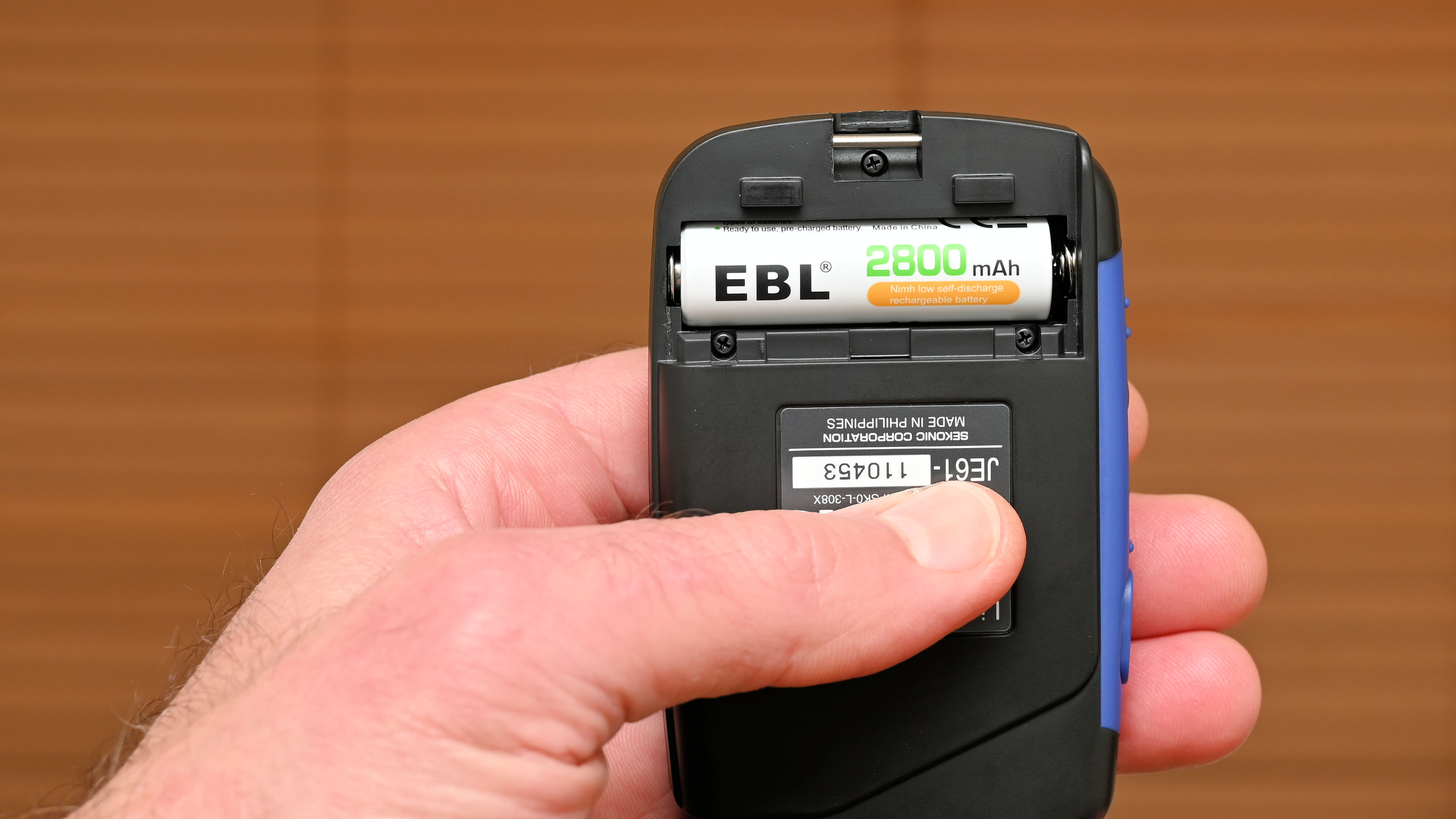
For power, a single alkaline AA battery lasts for about 20 hours of use, auto power-off helping to preserve its life, when kicking in after 4 minutes of inactivity. I like that the power gauge shows full when I insert a freshly charged Ni-MH rechargeable battery rather than an alkaline cell, which isn’t the case with some battery-powered flash triggers and other equipment I’ve used. All in all, the L-308X is a top performer.
Sekonic Flashmate L-308X: Verdict
I love that simplicity and versatility combine so seamlessly in the Sekonic Flashmate L-308X. And while it’s certainly a ‘flash mate’ ideal for studio lighting, it’s equally useful for indoor and outdoor shots under natural and artificial lighting. I find that can trust its unerring accuracy and consistency implicitly, and get the results I want every time. Compared with the older L-308-S, the additional videography functions make it a dream for hybrid shooters. Sure, it’s not cheap to buy but, all things considered, I think it’s great value for money.
| Features | The feature set takes ambient and flash metering in its stride, for both stills and video. | ★★★★★ |
| Design | The design is firmly based on the older L-308S, which is no bad thing. If it ain’t broke, don’t fix it. | ★★★★★ |
| Performance | I’ve found the Sekonic to be entirely accurate and consistent, giving meter readings I know I can trust. | ★★★★★ |
| Value | It’s perhaps a little pricey if you’re only going to use it occasionally but it’s still very good value for money. | ★★★★☆ |
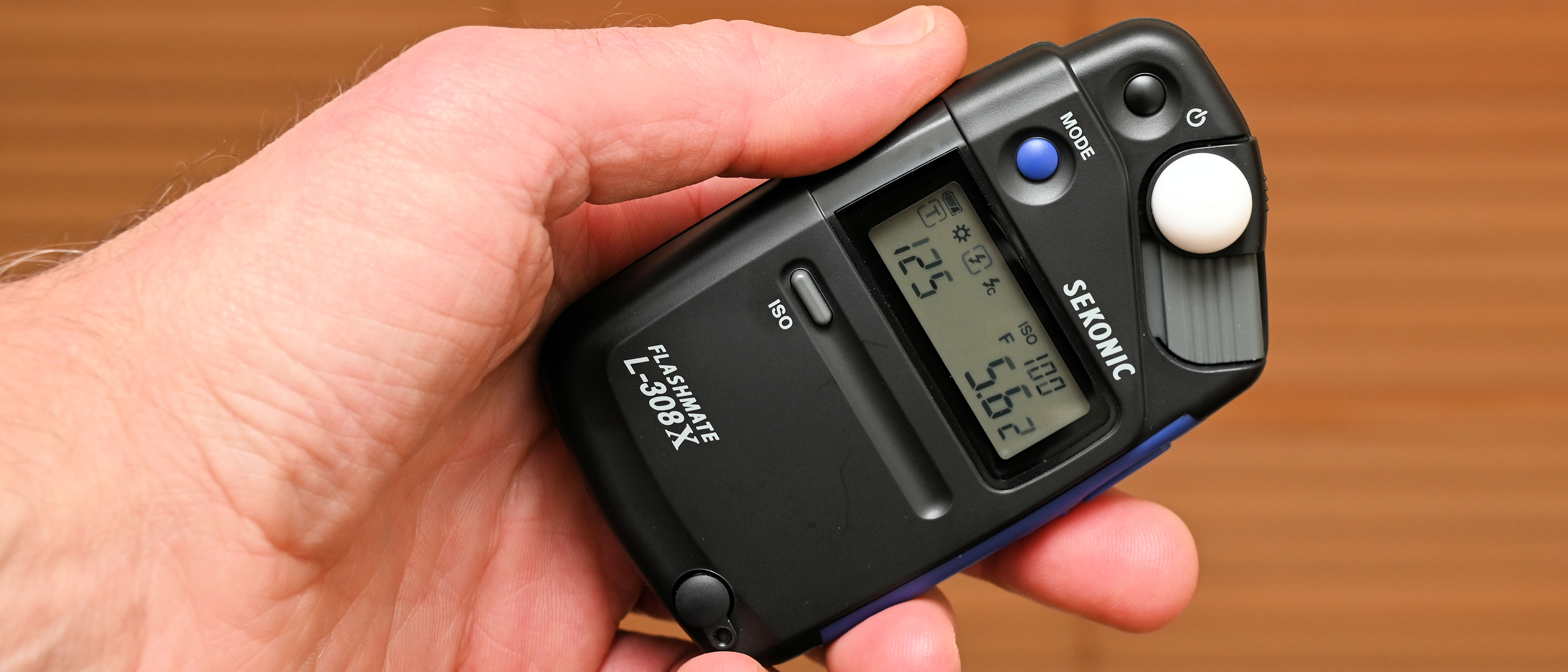
Should you buy the Sekonic Flashmate L-308X?
✅ Buy this...
- You want a light meter that works equally well for ambient and flash lighting, and for shooting video as well as stills.
- You need a light meter that’s quick and easy to use, with an intuitive interface and all the benefits of being a digital device.
🚫 Don't buy this...
- You only want a light meter for stills shooting under ambient lighting, in which case you might prefer a less expensive, analog alternative.
- You’d rather go for a more up-market Sekonic light meter, with a fancy interface and RF wireless triggering options for a range of different flash systems.
Alternatives
The Sekonic Studio Deluxe III L-398A costs $239/£235, about the same as the L-308S, and is an analog meter that’s rich in retro charm. No batteries required and there are plenty of dials to play with, although it doesn’t work as a flash meter.
The Sekonic L-208 Twinmate is a downsized delight with a similarly small price tag of $139/£135. It’s another analog rather than digital affair and runs on a CR2032 coin battery, but again lacks the flash metering capability of the L-308X.
Matthew Richards is a photographer and journalist who has spent years using and reviewing all manner of photo gear. He is Digital Camera World's principal lens reviewer – and has tested more primes and zooms than most people have had hot dinners!
His expertise with equipment doesn’t end there, though. He is also an encyclopedia when it comes to all manner of cameras, camera holsters and bags, flashguns, tripods and heads, printers, papers and inks, and just about anything imaging-related.
In an earlier life he was a broadcast engineer at the BBC, as well as a former editor of PC Guide.

